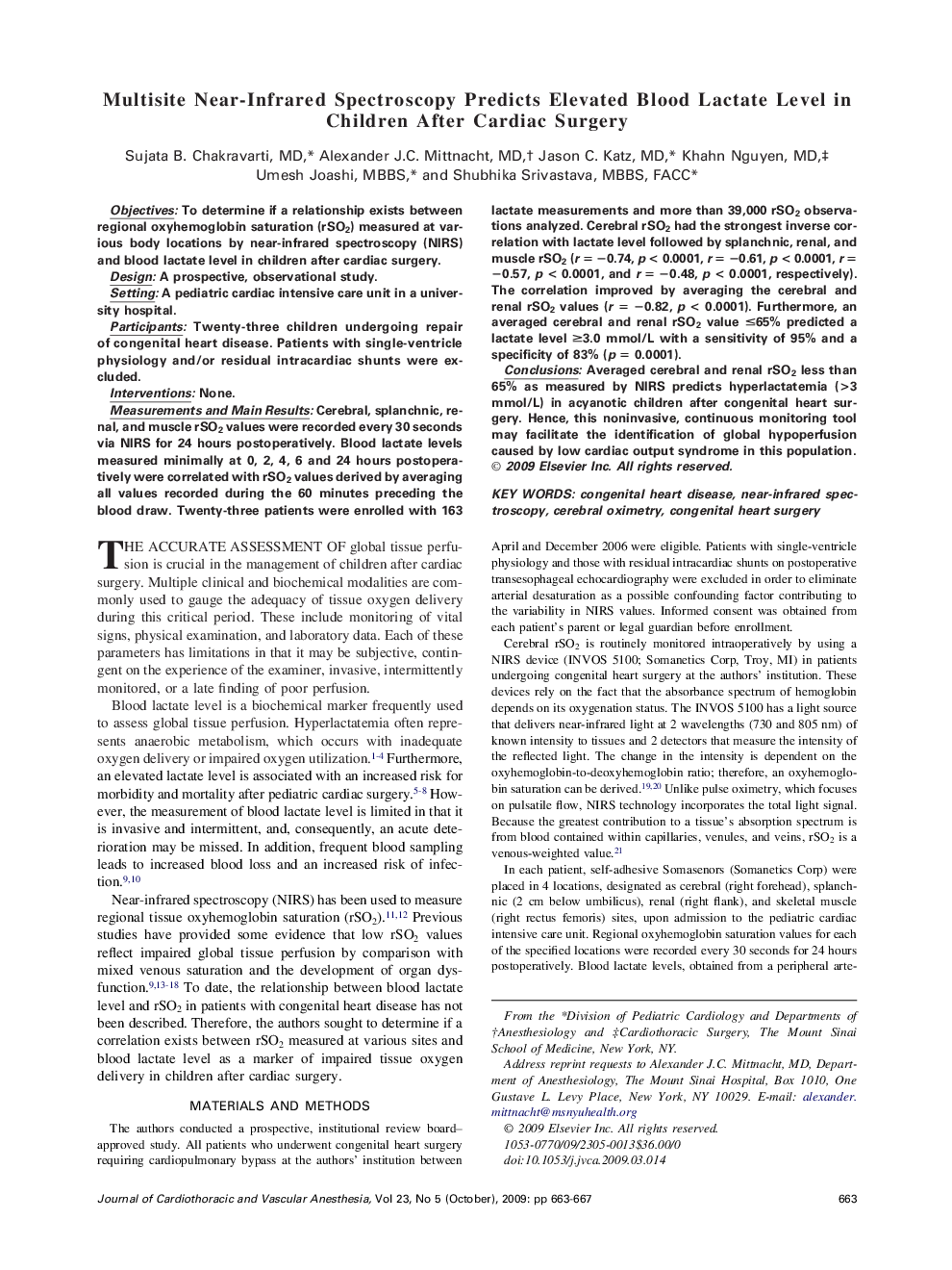| کد مقاله | کد نشریه | سال انتشار | مقاله انگلیسی | نسخه تمام متن |
|---|---|---|---|---|
| 2760403 | 1150172 | 2009 | 5 صفحه PDF | دانلود رایگان |

ObjectivesTo determine if a relationship exists between regional oxyhemoglobin saturation (rSO2) measured at various body locations by near-infrared spectroscopy (NIRS) and blood lactate level in children after cardiac surgery.DesignA prospective, observational study.SettingA pediatric cardiac intensive care unit in a university hospital.ParticipantsTwenty-three children undergoing repair of congenital heart disease. Patients with single-ventricle physiology and/or residual intracardiac shunts were excluded.InterventionsNone.Measurements and Main ResultsCerebral, splanchnic, renal, and muscle rSO2 values were recorded every 30 seconds via NIRS for 24 hours postoperatively. Blood lactate levels measured minimally at 0, 2, 4, 6 and 24 hours postoperatively were correlated with rSO2 values derived by averaging all values recorded during the 60 minutes preceding the blood draw. Twenty-three patients were enrolled with 163 lactate measurements and more than 39,000 rSO2 observations analyzed. Cerebral rSO2 had the strongest inverse correlation with lactate level followed by splanchnic, renal, and muscle rSO2 (r = −0.74, p < 0.0001, r = −0.61, p < 0.0001, r = −0.57, p < 0.0001, and r = −0.48, p < 0.0001, respectively). The correlation improved by averaging the cerebral and renal rSO2 values (r = −0.82, p < 0.0001). Furthermore, an averaged cerebral and renal rSO2 value ≤65% predicted a lactate level ≥3.0 mmol/L with a sensitivity of 95% and a specificity of 83% (p = 0.0001).ConclusionsAveraged cerebral and renal rSO2 less than 65% as measured by NIRS predicts hyperlactatemia (>3 mmol/L) in acyanotic children after congenital heart surgery. Hence, this noninvasive, continuous monitoring tool may facilitate the identification of global hypoperfusion caused by low cardiac output syndrome in this population.
Journal: Journal of Cardiothoracic and Vascular Anesthesia - Volume 23, Issue 5, October 2009, Pages 663–667